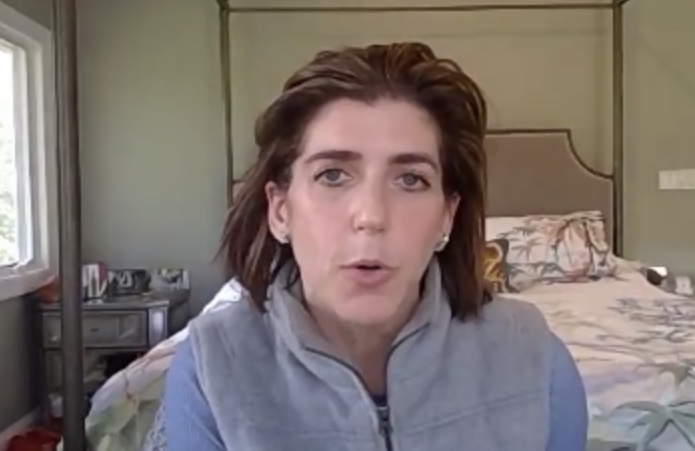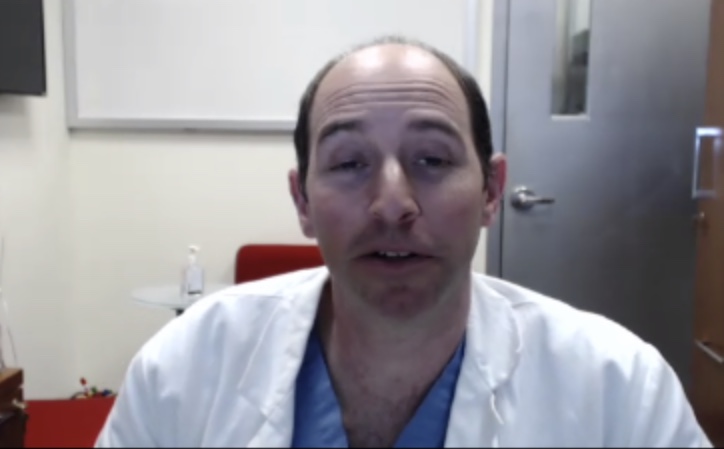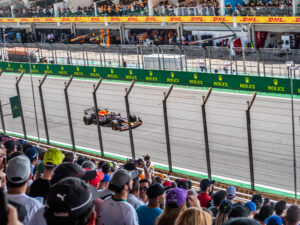Convalescent Plasma could protect front line health care workers from Covid-19.
Diana Berrent (0001) as First Convalescent Plasma donor in New York.
Photo Niyi Fote/Thenews2

As the front line health care workers like doctors,nurses,the respiratory technicians,the phlebotomists and others are being feared might contract the Covid-19 virus while on duty,clinical trials are about to start in a week from now,to apply convalescent plasma,the liquid component of blood from Covid-19 survival patients,to combat SARS-COV-2,the virus that causes Covid-19 on the workers
There would be 3 clinical trials led by a group at Hopkins and also at Mayo according to Dr Eldad A.Hod,the lead investigator of a clinical study at Columbia University Irving Medical Center that is screening the blood of COVID-19 survivors for antibodies.

Photo Niyi Fote/Thenews2
The first would be on health care workers,who don’t have the virus but would be applied on them before going on their shifts,to be a kind of shield protecting them from getting Covid-19 while on duty. They would get randomized and so some of them would get it and some of them would get regular plasma and would be tracked over time to see if there’s a difference in conversion rate, or a difference in whether they develop the disease or not. In addition,the second trial would be on patients who tested positive to Covid-19 and the last one would be on those in the Intensive Care Unit (ICU).
Dr. Hod,who is an associate professor of pathology and cell biology at Columbia University’s Vagelos College of Physicians and Surgeons and transfusion medicine expert also pointed out during the online press briefing on April 14 in New York,the importance of the two mechanisms of getting convalescent plasma to the blood bank; through the Red Cross,the Mayo Clinic, and funded through BARDA.
Dr Hod was really grateful for having Diana Berrent,New York state resident who was infected with COVID-19 in March and survived. He said “We were very fortunate to have you as our first participant, and you helped us a lot in our recruitment efforts thus far to fill up our blood bank with other – more liquid gold that we can use to potentially save others.” Diana has donated convalescent plasma,which could be used to treat other Covid-19 patients.
Diana got sick on March 13 and received a positive diagnosis on March 18th and now tested negative. She immediately started Survivor Corps ( www.survivorcorps.com) three weeks ago as a Facebook group that has already grown to well over 31 to 32,000 members and the principal “goal is to motivate individuals who are either struggling with COVID – if they qualify for those studies – but mostly survivors to donate their plasma in an effort to treat ill patients and contribute towards medical research, but moreover support the scientific, medical, and academic community in every possible effort in recruiting volunteers to help stem the tide of this pandemic” she said.
Although,this convalescent plasma could help a lot,there are some concerns at least scientifically and theoretically, that giving convalescent plasma in the wrong situations may actually be harmful.It’s not necessarily always going to be beneficial.”So if you think about it, if someone is very sick and they have virus in their lungs, and you give them an antibody that’s going to target the virus, you may cause the immune system to cause more inflammation and actually make it more difficult to breathe rather than cure the patient.” Dr Hod said. He believes they need to
proceed a little more cautiously with randomized controlled trials, ”50 percent of the patients we treat are going to get convalescent plasma, but 50 percent of the patients are going to get non-convalescent plasma.” So they’re going to get plasma from people who donated before December, and that’s the only way they’re going to find out whether this works or not before they begin rolling it out to the whole population.
And for someone to know the results of these clinical trials, it will depend on the effect size.If it’s very protective, one would know relatively quickly as there is something called stopping rules and interim looks at the data.There would be a plan to look at the data at periodic time points so that they could see whether there is a big difference between those who were randomized to the control or those who got the convalescent plasma with ethical boards who sit there and statisticians who will sit there and review the data and decide whether the data is sufficient to stop the study. This way,they can provide the results in maybe weeks to months or to a month as opposed to waiting three years like some trials can take.
As we all know that convalescent plasma or passive antibody therapy last for a short time like weeks or few months,but,if they continue to have a supply,more convalescent plasma in the blood bank– that might buy them more time to develop new vaccines or new treatments, so it’s going to be a temporizing measure – you could always dose it again. There’s nothing to stop them from dosing it again for essential workers who are going to be exposed. “A mother protects her baby with antibodies. So babies are born without the ability to make antibodies, and the antibodies the baby gets from their mother protects them for the first three or four months of life. And so it’s sort of a similar concept. It’s going to protect people for two, three months, and then either we’ll have to dose again or have other – hopefully in two, three months it’s – we’re going to be in a different place and we’ll have other options for treatment.” Dr Hod emphasized.
By Niyi Fote /Thenews2







